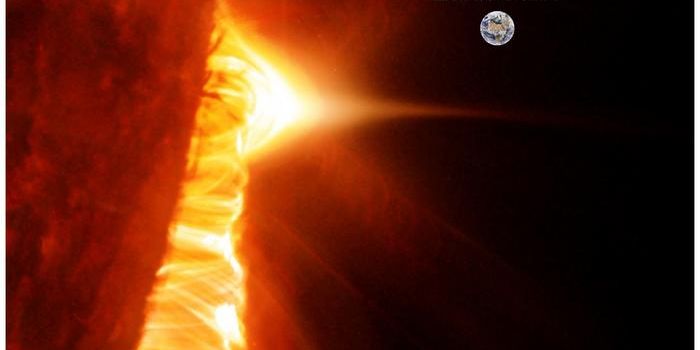Solar Probe Plus Mission Now Closer to Studying the Sun Up Close
NASA is all over the place in our Solar System with all kinds of spacecraft types. They’re trying to learn more about what created it all and whether or not there are any other forms of life out there in our Solar System.
One of the places in our Solar System that we haven’t done a lot of studying up close is our very own star, the Sun. With a new spacecraft that will be dubbed the Solar Probe Plus, NASA will be following through with a mission to learn more about the Sun’s atmosphere and its surrounding environment.
The mission is scheduled to take off in July-August of 2018 and so far, the mission is reportedly making great progress in its development following a successful management review in July. It’s currently being assembled in the Applied Physics Laboratory (APL) at Johns Hopkins University.

Image Credit: NASA/JHUAPL
“Reaching this stage means a lot to the team and our stakeholders,” said Andy Driesman, Solar Probe Plus project manager at the Johns Hopkins Applied Physics Laboratory (APL).
“It shows we’ve designed a spacecraft, instruments and a mission that can address the engineering challenges associated with the harsh solar environment, and send back the data that scientists have sought for decades,” he continued. “It’s humbling to see designs and ideas start to become a spacecraft.”
The Solar Probe Plus mission is going to make the closest approach to the Sun that any spacecraft has ever made, effectively giving us the clearest front-row seat of the Sun ever.
Among the things that the spacecraft will study are magnetic fields, plasma and energetic particles, and even solar winds.
It will get as close as 3.9 million miles away from the Sun’s surface, which is 7 times closer than any other spacecraft in history has ever gotten to the Sun. At this close of a distance from the Sun, the spacecraft will see solar intensities of up to 500 times more intense than any spacecraft orbiting the Earth typically sees.
To protect the onboard instruments from the Sun’s intense heat, the spacecraft will be layered with a 4.5-inch thick shell of carbon composite, which, in theory, will keep the internals operating at room temperature. Such materials are expected to be able to handle up to 2,500º Fahrenheit.
Solar Probe Plus is also going to take advantage of seven fly-bys of Venus before getting to the Sun, which will not only help the probe in getting closer to the Sun, but also give us some valuable information about Venus.
This is a milestone mission that will help NASA learn more about our Sun and better understand the physics of our solar system through observation. It should be interesting to see what comes out of this mission once it is launched.
Source: Johns Hopkins University








